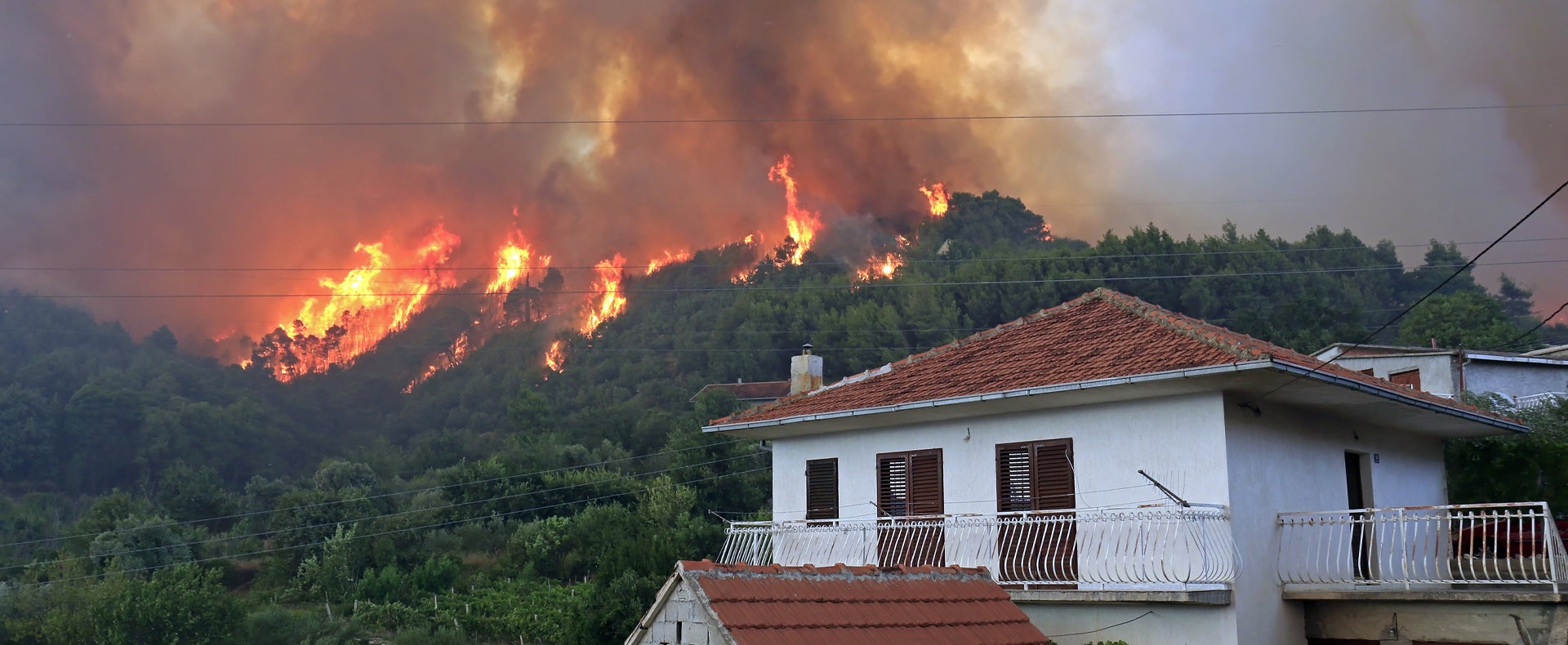While burned-out homes, vehicles, and forests are the obvious signs of the wildfires’ destruction, it’s the secondary impact of the flames, namely smoke, that’s causing concern not just in the states affected, but across the entire country.
In fact, though smoke is most heavily concentrated in the areas where the fires are burning, the Jetstream has now carried it across the globe to Europe, according to observations from the Copernicus Atmosphere Monitoring Service, a science agency that is part of the European Commission.
The Environmental Protection Agency (EPA) measures air quality on a color-coded scale known as the Air Quality Index (AQI). The AQI tells you how clean or polluted your air is, and what associated health effects might be a concern for you.
Think of the AQI as a yardstick that runs from 0 to 500. The higher the AQI value, the greater the level of air pollution and the greater the health concern. During the wildfires, the air quality in Seattle, Wash., was in the “red” zone, at 170, which is considered unhealthy.1
According to the EPA, during a wildfire, smoke can make the outdoor air unhealthy to breathe. If you are close to a wildfire, the fire itself, as well as heavy smoke and ash, it can pose serious, immediate risks to your safety and health.2
These wildfires have been particularly destructive, completely wiping out homes and neighborhoods in their paths. When a home catches fire, it comes in contact with materials treated with fire retardant chemicals to slow the progression of the fire. When fire retardants eventually catch on fire, they cause an influx of harmful and extremely deadly chemicals into the atmosphere.
Some flame retardants convert into dioxins and furans when burned. Materials treated with brominated flame retardants also create more carbon monoxide, smoke and hydrogen cyanide.3
Another common chemical released in fires is from polyvinyl chloride (PVC), a plastic used to make pipes, wall coverings, siding, decking, fencing, shower curtains, furnishings, kitchen floors, and children’s toys.4 When PVC burns, it releases highly hazardous chemicals including vinyl chloride, dioxins, mercury, phthalates, and other chemicals that have been linked to deterioration of the central nervous system, liver damage, reproductive harm, and certain cancers.3
The biggest health threat from smoke is from the fine particles you can’t see. These microscopic particles can get into your eyes and respiratory system – whether you are outdoors or indoors, where they can cause health problems such as burning eyes, runny nose, and illnesses such as bronchitis. Fine particles from smoke also have been linked to:
- Premature death in people with heart or lung disease
- Non-fatal heart attacks
- Irregular heartbeat
- Aggravated asthma
- Decreased lung function
- Increased respiratory symptoms, such as irritation of the airways, coughing, or difficulty breathing.
People with heart or lung diseases, children, and older adults are the most likely to be affected by exposure to these particles.
For firefighters, being routinely exposed to the hazardous smoke and chemicals released during a fire is an occupational hazard. To combat the impact of smoke exposure on their health, many fire departments across the country are incorporating Sunlighten infrared saunas into their detoxification programs, and you can too. But how does Sunlighten help reduce the impact of smoke and toxins on the body?
Whether you’re a firefighter or you live in a community where you’ve been exposed to smoke from a wildfire, after you’re exposed to smoke, you should be encouraged to sweat. This helps remove toxins from the body. You can do this by extensive exercising, like running or cycling. While this is a good option, so is the use of infrared sauna therapy. With a Sunlighten infrared sauna, you will receive a deep infrared penetration addressing tissue where your toxins are harbored — your body’s core temperature will rise three degrees, increasing white blood cell and T-cell production, as well as allowing your body to have a deeper, more productive sweat.
There have been many studies proving that an induced sweat is one of the most efficient ways a body can self-detox and rid itself of harmful chemicals. Specifically, the act of sweating can help reduce the risk of cancer by purging carcinogenic substances such as lead, cadmium, mercury, PCBs, flame retardants, asbestos, polycyclic aromatic hydrocarbons (PAHs) and arsenic.5
Infrared saunas use infrared light energy experienced as heat to warm the body directly. This triggers a deep, cleansing sweat, increasing circulation and boosting the immune system. Infrared light is just beyond the visible spectrum and naturally produced by the sun and absorbed by the body’s cells. Infrared saunas should be designed to produce the most healing spectrum of infrared light. However, not all infrared saunas are created equal.6
Sunlighten’s far infrared saunas are one of the most effective methods of inducing a detoxifying sweat, carrying toxins out of the body through the pores. This heating technology is the only sauna heater clinically shown to raise core body temperature by 2 to 3 degrees vs. simply heating the air around the body.
The deep penetration of infrared heat releases toxins from the fat layers just beneath the skin. These toxins pass from the organs to the fat tissue under the skin. Then they are eliminated in perspiration.
Patrick Gordon, Firefighter and Paramedic of Huntley Fire Protection District, has personally experienced the detoxifying benefits of Sunlighten. “I researched many brands of infrared saunas and chose Sunlighten after a recommendation from Dr. Ryan Felde and his personal story with cancer prevention. We’ve added Sunlighten to our decontamination policy – anyone exposed to a fire must shower, sauna, then shower again,” he said.
“We can literally see how Sunlighten eliminates toxins from the body. After wiping sweat off the skin, there is a brown residue left on the towel. Sunlighten far infrared therapy is a powerful tool to maintain firefighters’ overall health and wellness. Huntley firefighters sauna two or three times per week and after every fire. As a result, they sleep better, feel better, and have stronger immune systems. I personally have not been sick since using the Sunlighten sauna on regular basis and have purchased one for my home.”
Fire also has a distinct smell and because that odor that seeps into skin and hair follicles, anyone exposed to smoke and fire can carry that odor for days. That lingering smell of smoke and toxins is unpleasant, and can be especially disturbing for those with PTSD (Post Traumatic Stress Disorder) as a result of fighting or being caught in a fire.
Vanessa Galati-Drew, owner of Cleansing Concepts, New York, and wife of Lt. John Drew of FDNY-Queens, said, “With his routine Sunlighten sauna sweats, my husband is able to eliminate the smell of smoke that emanates from his body. The comfort of Sunlighten’s PURE far infrared heat allows John to stay in for longer sauna sessions if desired. He has been able to reduce mental anxiety and relax using IR sauna therapy as it calms nerves. He sleeps noticeably better.”
Learn how you can reduce the toxic impact of smoke and fire on your health with Sunlighten’s SoloCarbon® infrared technology.



